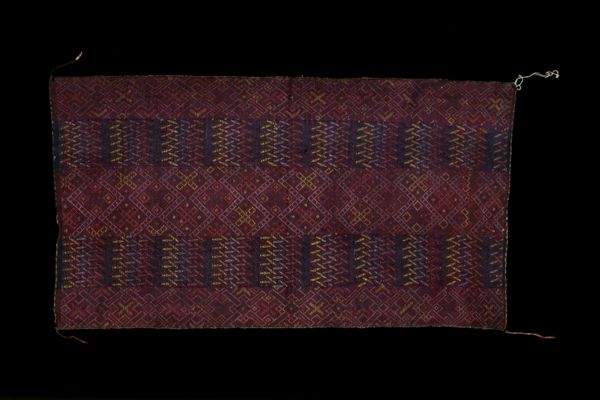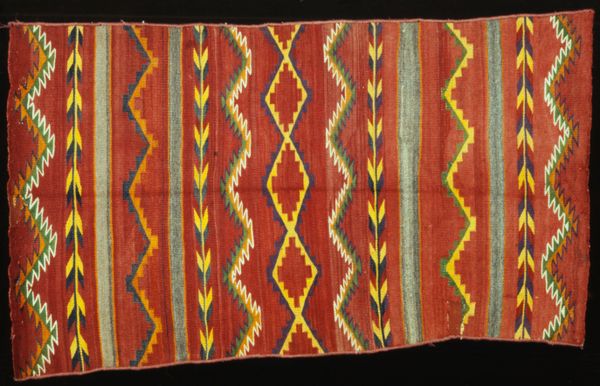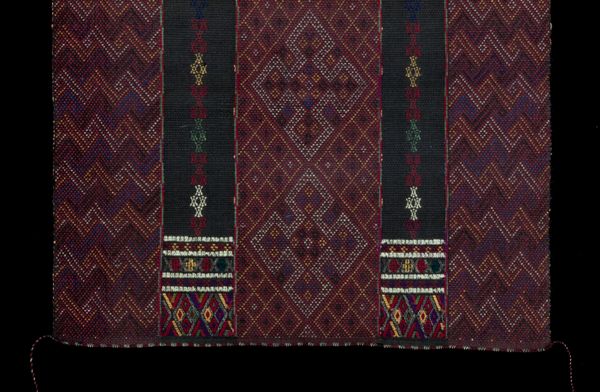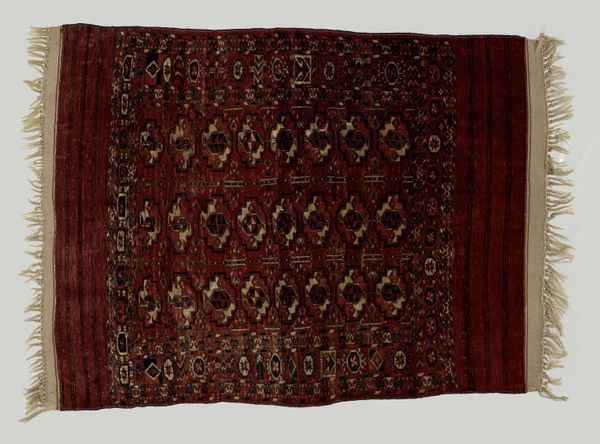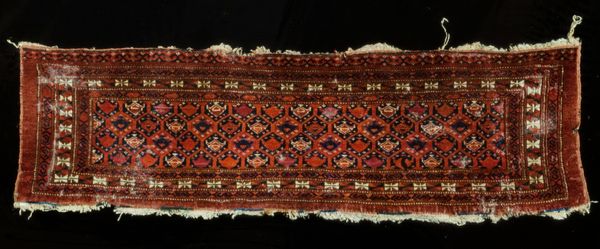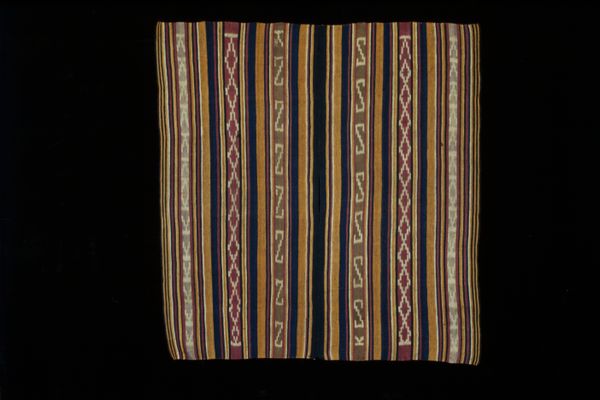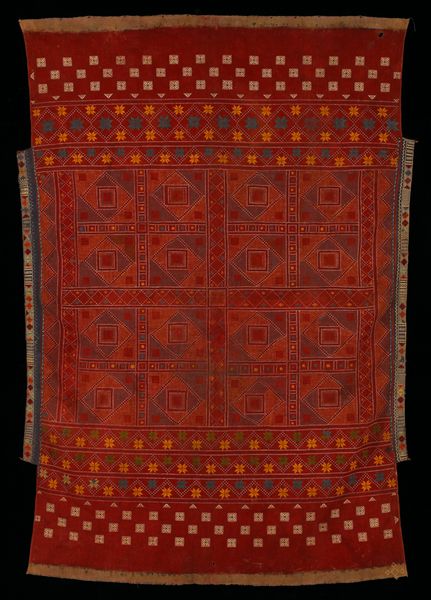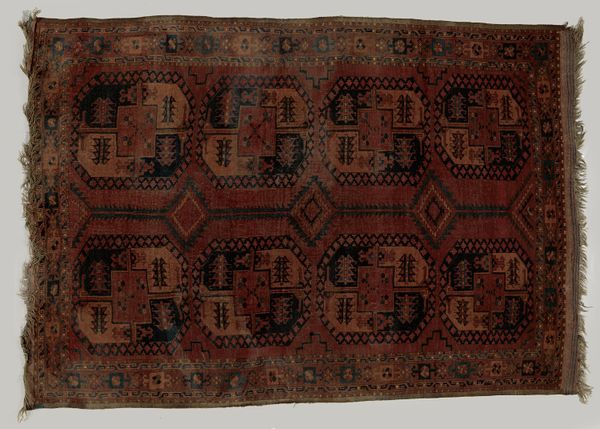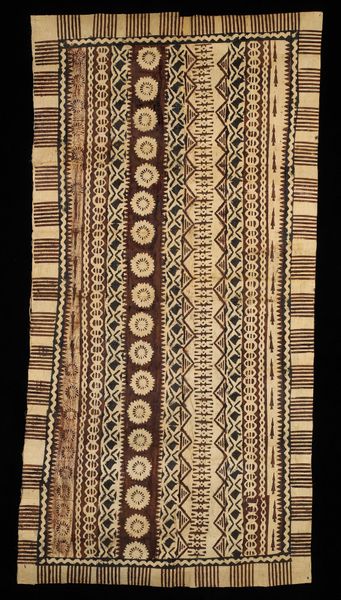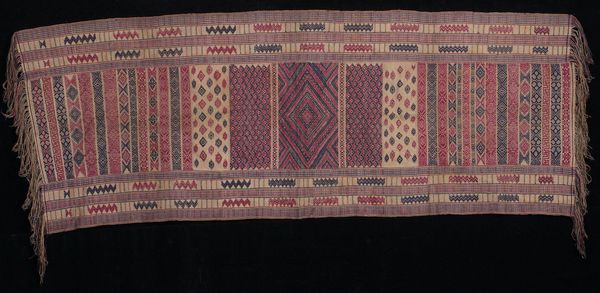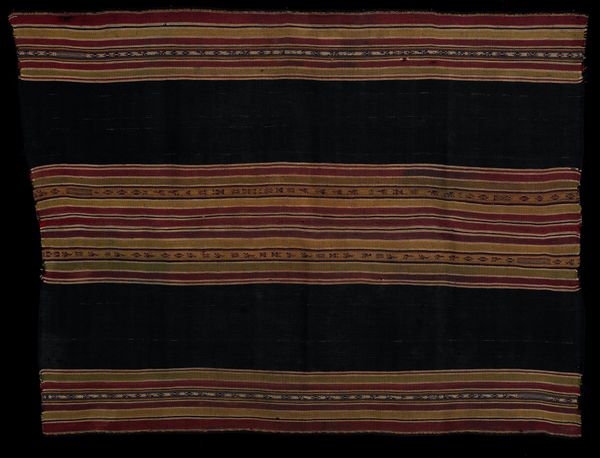
textile
#
natural stone pattern
#
pattern used
#
textile
#
geometric pattern
#
hand-embroidered
#
repetitive shape and pattern
#
geometric
#
repetition of pattern
#
regular pattern
#
pattern repetition
#
beaded
#
layered pattern
Dimensions: 85 x 15 1/4 in. (215.9 x 38.74 cm)
Copyright: Public Domain
Editor: Here we have a textile called "Kera," dating back to the 20th century. It's made with silk, cotton, and what appears to be beadwork. The patterns and colors give it a warm and inviting feel, even with the strong geometric elements. What stands out to you when you look at this piece? Curator: The rhythm, most definitely. It is more than mere decoration; this rhythm embodies cultural memory. Do you notice how each band of geometric figures has a distinctive character yet relates to the others? These aren't just pretty shapes; they're visual echoes of tradition, almost like coded narratives passed down through generations. Editor: I see that! So, are you suggesting that these geometric patterns hold symbolic meaning? Curator: Absolutely. Think of textiles as historical documents, pre-literate forms of record keeping. The choice of shapes, their repetition, the very act of weaving, all serve as mnemonic devices. Each motif may once have represented specific clans, stories, or beliefs within the culture that created it. Can you see a connection to any historical pattern or symbol? Editor: Hmm… I’m seeing some diamond shapes and what look like stepped patterns… similar to those found in other indigenous art forms, maybe hinting at connectivity between communities. Curator: Precisely. Textiles such as "Kera" create material connection to cultural pasts. Their beauty is just a gateway to appreciating cultural complexity. Editor: That's really changed how I see this piece! It’s not just pretty patterns but rather a tangible piece of cultural history. Curator: And a testament to the enduring human need to weave stories into the fabric of our lives, quite literally. It’s a reminder that even seemingly simple shapes can hold profound cultural weight.
Comments
No comments
Be the first to comment and join the conversation on the ultimate creative platform.
